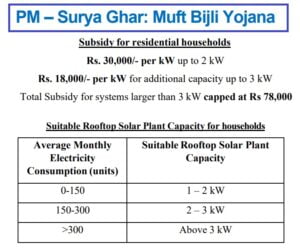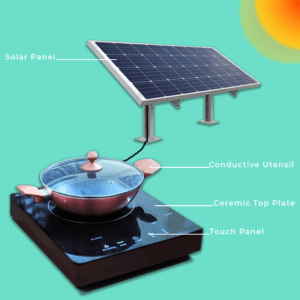- The “Roof Top Scheme” typically refers to government initiatives or programs
- It is aimed at promoting the installation of solar panels on rooftops of residential, commercial, and industrial buildings.
- Here are the advantages and disadvantages of such schemes:
High Initial Costs:
- The upfront cost of purchasing and installing solar panels can be a barrier for many consumers, despite incentives and subsidies.
- High battery and storage cost, inverter cost

Intermittent Energy Production:
- Solar power generation depends on sunlight availability, making it intermittent and less predictable compared to fossil fuel power plants.
Space Requirements
- Rooftop solar systems require sufficient space and proper orientation to maximize energy production, which may not be feasible for all buildings.
Maintenance and Lifespan:
- Solar panels require regular maintenance and have a limited lifespan (usually 25-30 years), necessitating replacements and upkeep costs over time.
Technological Limitations:
- Current solar technology has limitations in terms of efficiency and energy storage, although ongoing research aims to address these issues.
Grid Integration Challenges:
- Integrating rooftop solar power into the existing electrical grid can pose challenges related to grid stability, voltage fluctuations, and management.
Aesthetics and Regulations:
- Some homeowners associations or local regulations may have restrictions or aesthetic concerns regarding the installation of solar panels on rooftops.
Summary
- Overall, rooftop solar schemes offer numerous benefits in terms of clean energy, cost savings, and environmental sustainability
- But they also face challenges related to costs, technology, and integration into existing infrastructure.
- Ongoing advancements and supportive policies are essential for maximizing the advantages and overcoming the disadvantages of such programs.



